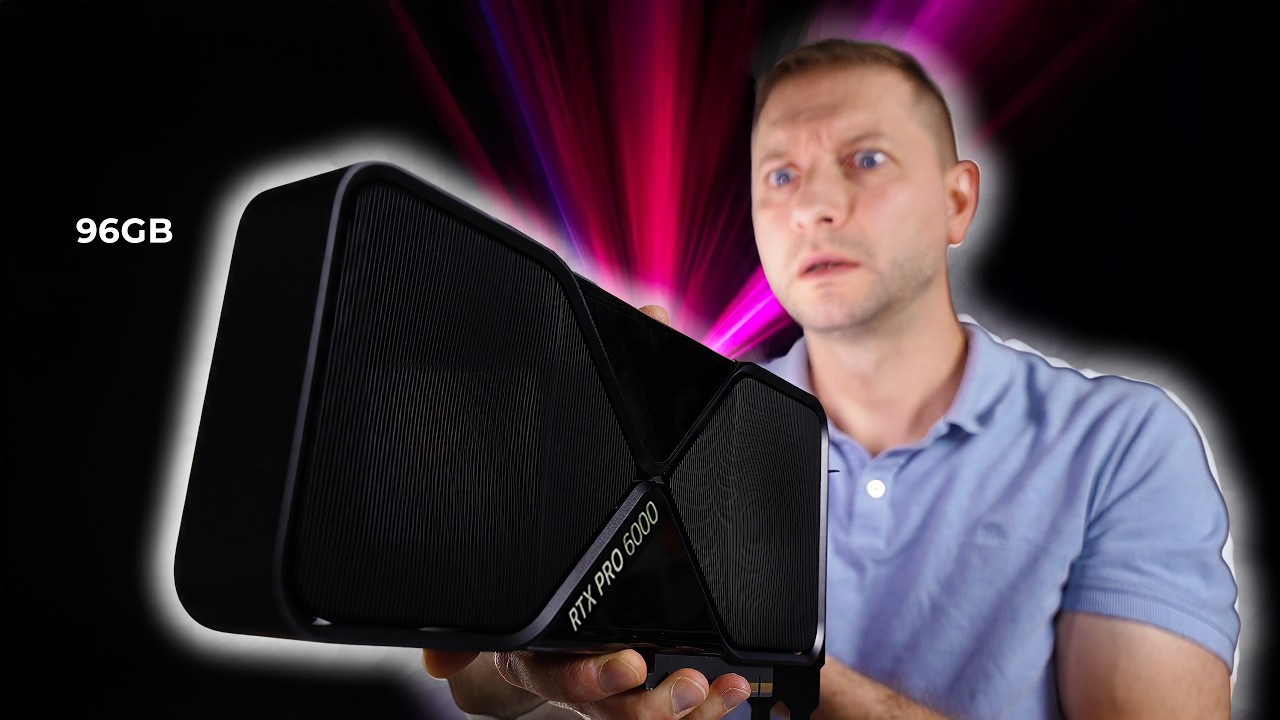The video compares the NVIDIA RTX Pro 6000 with other GPUs like the RTX 5090 and Apple M3 Ultra, highlighting its impressive 96GB VRAM and strong performance in handling large AI models and long prompts. Despite its high cost and physical challenges, the RTX Pro 6000 outperforms competitors in token processing speed and efficiency for AI workloads, making it a powerful choice for demanding machine learning tasks.
The video features an in-depth comparison of the new NVIDIA RTX Pro 6000 graphics card with other GPUs, including the RTX 5090, RTX 3050, 5060 Ti, and an Apple M3 Ultra Mac Studio. The presenter highlights the impressive VRAM capacity of the RTX Pro 6000 at 96GB, making it suitable for large AI models and demanding workloads. Despite its weight and difficulty to acquire, the card is showcased as a powerful tool for AI and machine learning tasks, capable of handling large models with high memory requirements.
Throughout the video, the presenter tests the performance of the RTX Pro 6000 against the RTX 5090 across various models and prompts, measuring tokens per second as a performance metric. The results show that the RTX 6000 generally outperforms the 5090 on larger models and longer prompts, especially when fully utilizing its VRAM and offloading layers efficiently. The presenter also discusses the power consumption, cooling, and physical setup of the card, emphasizing the importance of proper airflow and case design to prevent overheating.
The comparison extends to different model sizes and quantization levels, including FP16, FP32, and quantized models like Q4 and Q8. The RTX Pro 6000 demonstrates strong performance across these configurations, often surpassing or matching the 5090, especially on larger models with extensive context lengths. The presenter experiments with extremely long prompts, even up to 35,000 tokens, to test the limits of the hardware and software, revealing the impact of VRAM and model architecture on processing speed and latency.
In the final analysis, the presenter evaluates the cost-effectiveness of the RTX Pro 6000 relative to the Mac Studio with an M3 Ultra. Despite the high price, the GPU offers significantly better token processing speeds per dollar, making it a more powerful option for AI workloads. The video concludes with a recommendation that, for raw performance and large model handling, multiple RTX cards are preferable over a single Mac Studio, though the latter still offers advantages in memory capacity and versatility. The presenter also notes the potential for future improvements with newer Apple silicon chips and highlights the gaming capabilities of the RTX Pro 6000 as an added benefit.
